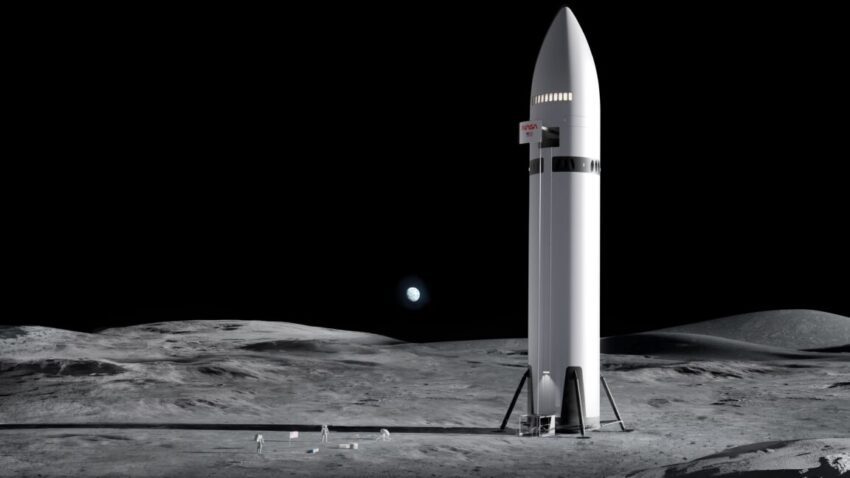
spacex teases simplified starship as alarms sound SpaceX has provided a comprehensive update on its ambitious plans to land astronauts on the Moon, as concerns mount over potential delays and competition from China.
spacex teases simplified starship as alarms sound
Background on SpaceX and NASA’s Artemis Program
SpaceX, founded by Elon Musk in 2002, has consistently positioned itself as a pioneer in the aerospace industry. The company’s overarching goal is to facilitate human life on Mars, a vision that has driven its innovations and projects over the years. One of the most significant contracts SpaceX holds is with NASA, under the Artemis program, which aims to return humans to the Moon for the first time since the Apollo missions concluded in 1972.
The Artemis program is designed not only to land astronauts on the lunar surface but also to establish a sustainable human presence there. This initiative is seen as a stepping stone for future missions to Mars. However, as the timeline for Artemis has faced delays, concerns have arisen regarding the United States’ ability to maintain its leadership in space exploration, especially with China making significant strides in its lunar ambitions.
Recent Developments from SpaceX
On Thursday, SpaceX released a detailed statement outlining its role in the Artemis program and addressing the increasing pressure surrounding the timeline for lunar landings. This update marks the most extensive public communication from the company regarding its lunar ambitions in nearly two years. In the statement, SpaceX emphasized its commitment to being a “central enabler” for NASA’s vision, asserting that it is well-positioned to support the establishment of a lasting presence on the Moon.
SpaceX’s Starship, a fully reusable spacecraft designed for missions to both the Moon and Mars, is at the heart of this initiative. The company reiterated that Starship is the fastest path to achieving lunar landings, a claim that underscores its confidence in the spacecraft’s capabilities. The statement also highlighted the technological advancements that have been made since the last public update, including improvements in design and safety features.
Technological Innovations and Simplifications
In its recent update, SpaceX hinted at a simplified version of Starship that could expedite the development process. This simplification is crucial as it aims to address the complexities that have previously led to delays in testing and production. By streamlining the design, SpaceX hopes to enhance efficiency and reduce the time required to prepare for upcoming missions.
Elon Musk has been vocal about the need for rapid iteration and testing, which has been a hallmark of SpaceX’s approach to innovation. The company has conducted numerous test flights of Starship prototypes, learning from each iteration to refine the design further. This iterative process is essential not only for the success of lunar missions but also for the long-term goal of reaching Mars.
Challenges and Competition
Despite SpaceX’s optimism, the challenges ahead are significant. The Artemis program has faced multiple delays, primarily due to technical issues and budget constraints. NASA’s reliance on traditional aerospace contractors has also been criticized by Musk, who believes that this approach slows down progress. As a result, there is growing concern that the United States may fall behind in the race to return humans to the Moon.
China’s lunar ambitions have intensified this competition. The country has made substantial investments in its space program, achieving milestones such as landing rovers on the Moon and conducting successful lunar sample return missions. As China continues to advance its capabilities, the urgency for the U.S. to expedite its lunar plans has become more pressing.
Stakeholder Reactions
The reactions from various stakeholders have been mixed. Supporters of SpaceX and the Artemis program express confidence in the company’s ability to deliver on its promises. They argue that SpaceX’s innovative approach and rapid development cycles are essential for the future of space exploration. However, critics point to the delays and the complexities involved in the Artemis program as reasons for concern.
NASA officials have also acknowledged the challenges but remain optimistic about the collaboration with SpaceX. They emphasize that the partnership is crucial for achieving the goals of the Artemis program and that SpaceX’s advancements in technology will play a pivotal role in future missions.
The Implications of Delays
Delays in the Artemis program could have far-reaching implications for the United States’ position in space exploration. A successful lunar landing is not only a matter of national pride but also a demonstration of technological prowess and leadership in the global arena. If the U.S. fails to meet its timelines, it risks ceding ground to other nations, particularly China, which could set a precedent for future space endeavors.
Moreover, the implications extend beyond geopolitics. The Artemis program is designed to foster international collaboration in space exploration. Delays could hinder partnerships with other countries and organizations that are eager to participate in lunar missions. The potential for collaborative projects could be diminished if the U.S. is perceived as lagging behind.
Future Prospects
Looking ahead, SpaceX’s commitment to the Artemis program remains strong. The company is focused on refining the Starship design and expediting testing processes to ensure that it can meet NASA’s requirements. As the timeline for lunar missions approaches, SpaceX is likely to ramp up its efforts to demonstrate the capabilities of Starship.
In addition to its lunar ambitions, SpaceX is also preparing for future Mars missions. The lessons learned from the Artemis program will be invaluable as the company seeks to establish a human presence on the Red Planet. The success of lunar landings will serve as a critical stepping stone for the more complex challenges posed by Mars exploration.
Conclusion
SpaceX’s recent update on its role in the Artemis program highlights the company’s commitment to advancing lunar exploration. As the pressure mounts for timely lunar landings, SpaceX is focused on simplifying its Starship design and enhancing its capabilities. However, challenges remain, particularly with the competition from China and the complexities of the Artemis program.
The implications of delays in the Artemis program extend beyond national pride; they could impact international collaboration and the future of space exploration. As SpaceX continues to innovate and push the boundaries of technology, the coming months will be critical in determining whether the United States can reclaim its position as a leader in lunar exploration.
Source: Original report
Was this helpful?
Last Modified: October 31, 2025 at 8:37 pm
0 views















